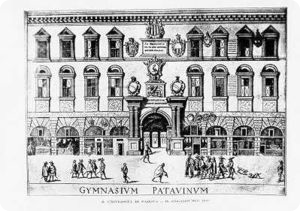to the Hofman-Bang Family website! The purpose of this site is to document the history and events of the Hofman-Bang family, its members and other connected families.
>> Read more |
|
|
Le Grand Tour

The 'Le Grand Tour' was a European travel itinerary that flourished from the middle of the 1500s until the arrival of mass rail transit in the 1820s. It was popular amongst young, upper-class men and served as an educational rite of passage for the wealthy. Its primary value lay in the exposure both to the cultural artifacts of antiquity and the Renaissance and to the aristocratic and fashionable society of the European Continent. A grand tour could last from several months to several years. (See map of Europe in the 1500s).
A large number of noblemen from Denmark, Sweden and other countries were sent on the 'Grand Tour'. Initially, they came to Wittenberg in Germany but later they also went to France, Italy and England. For the parents, it was a very expensive affair typically costing 1,000 daler per year. Usually, the men stayed away for a period of 4-5 years. Among the men that came to Padua in the early and middle part of the 1600s were Niels Jacobsen's sons: Sören Nielsen Hofman, Peder Lassen, Jacob Nielsen. Peder Benzon, who married Niels Jacobsen's daughter Anna, also came to Padua to study. When they returned to their home country, they would be guaranteed a well-paid job as civil servants or a position at the royal court.
The University of Padua is located in Padua, Italy, ca. 35 km's from Venice. It is among the earliest of the European universities and the second oldest in Italy. The university was founded in 1222 when a large group of students and professors left the University of Bologna in search of more academic freedom. The first subjects to be taught were jurisprudence and theology.
The curriculum expanded rapidly, however and by 1399 the institution had divided in two: a Universitas Iuristarum for civil law, Canon law, and theology, and a Universitas Artistarum which taught astronomy, dialectic, philosophy, grammar, medicine, and rhetoric. (The two were only reunited into one university in 1813.) The student body was divided into groups known as ‘nations’ which reflected their places of origin. The nations themselves fell into two groups: the cismontanes for the Italian students and the ultramontanes for those who came from beyond the Alps.
From the fifteenth to the eighteenth century, the university was renowned for its research, particularly in the areas of medicine, astronomy, philosophy and law. This was thanks in part to the protection of the Republic of Venice that enabled the university to maintain some freedom and independence from the influence of the Roman Catholic Church. During this time, the University adopted the Latin motto: Universa universis patavina libertas (The Freedom of Padua is complete for everybody).
|
Page updated: 8-Dec-2010
© www.hofman-bang.net - 1999-2025 |
|